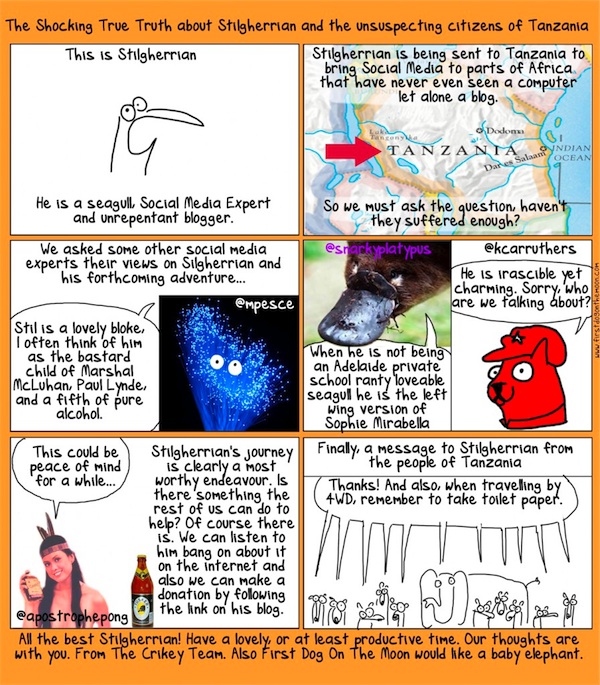Stilgherrian’s links for 16 June 2009 through 20 June 2009, posted with a distinct sense of “better late than never”:
- Tether me!: How to tether your iPhone (that is, use it as a broadband modem for your laptop) when when your carrier doesn’t officially support it. (I haven’t tried this. I don’t have an iPhone.)
- Hobby Horses | Blackbeard Blog: Tom Ewing observes that it might be better to stop trying to think about the “usefulness” of social media and instead consider it as a hobby. He draws some excellent parallels to hobbies and sport.
- Optimizing Rural E-service Engagement | Information Technology in Developing Countries: A paper comparing development-driven and entrepreneurial models of Internet services in rural third-world locations. On of the examples is India’s DakNet which I mentioned the other day.
- First Dog on the Moon | Crikey: The entire First Dog on the Moon back catalog is now online. 300+ images. Enjoy.
- Letter Opener | restoroot.com: A plug-in for OS X’s Mail.app to handle those pesky winmail.dat attachments that sometimes, even today, still infect some emails from people with Exchange servers (which have been poorly configured).


